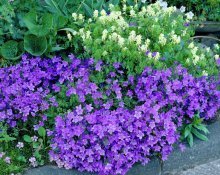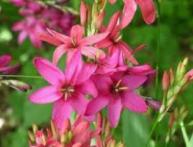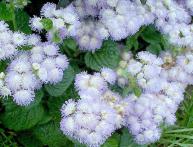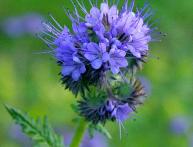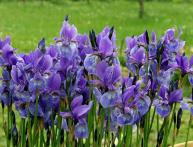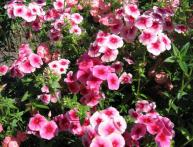Portenschlag bell: description, planting and care
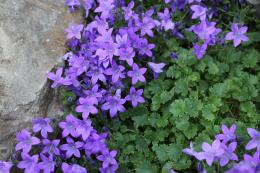
Bells are flowers that are so beloved among the people that several poems and songs mentioning these flowers come to mind. Therefore, they, with inflorescences attractive in their simplicity, have found their place in gardens and flower beds. Bells are readily used by flower lovers in landscaping.
The genus Bell received its name, of course, because of the shape of the inflorescence. It includes only herbaceous plant species, depending on size and other features, each species has its own purpose. Let's try to find out what it looks like bell portenschlag, how to grow it and use it on the site.
Content:
- Portenschlag bell, description of the plant
- Choosing a site and using the Portenschlag bell
- How to plant a portenschlag bell in the garden, caring for it
Portenschlag bell, description of the plant
All types of bells can be divided into groups, depending on the height of the shoots:
- short
- medium height
- tall
In terms of the size of its shoots, the Portenschlag bell is one of the shortest representatives of the genus. The plant is perennial, grows in the form of small bushes, from 5 to 10 cm in height, but not more than 15 cm. The bushes grow in width up to 30 - 35 cm. The shoots are bare or with slight pubescence, creeping, sometimes slightly raised. They form cushion-shaped bushes.
The leaves are round. The edges of the leaf blades are jagged, the underside is lighter than the top.There are plants whose leaves have pubescence. At the moment of full opening, the flowers look like stars, since the corolla consists of five, almost separated petals. The color of the flowers is purple. There are also plants with reddish flowers. Size up to 3 cm. Flowers are collected in loose inflorescences of 3 - 5 pieces at the ends shoots. The fruit is a capsule with very small seeds.
It grows wild in the Balkan countries:
- Croatia
- Montenegro
- Bosnia
Prefers to grow on rocky slopes. For this area, the Portenschlag bell is endemic, although it has successfully naturalized not only in England and France, but was also brought to New Zealand, where it has also successfully taken root. The plant has been in cultivation since the first half of the 19th century.
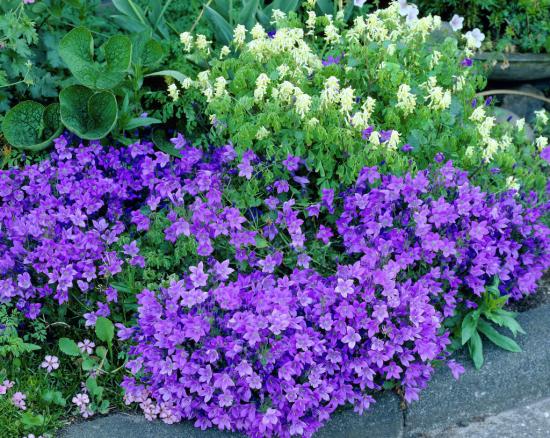
Discovered during a trip to Europe and collected by the Austrian botanist Franz E. von Portenschlag-Ledermayer. It was kept in his herbarium for some time, after which in 1819 it was described by another Austrian botanist J.A. Schultes. From him he received the name associated with the name of Portenschlag. The plant has gained popularity as an unpretentious ground cover plant.
Choosing a site and using the Portenschlag bell
Taking into account the fact that in the wild the plant colonizes the slopes of rocks with poor soil, then in the garden the plant is not very demanding on its composition. The only soil on which it does not grow is wet, heavy clay soils. It is preferable to choose areas with light, preferably sandy, sandy loam or loamy soils with a reaction close to slightly acidic, slightly alkaline or neutral. The place must be fairly dry.
The porthenschlagane bell is very demanding regarding the illumination of the place.Both a well-lit sunny place and partial shade are suitable for it. Winter hardiness is high, however, in damp places and with close groundwater, it can die in winter. In the garden, the plant is great for alpine slides. In them it creates bright spots that accentuate attention.
In addition, given good growth, they can become the basis for landscaping vertical slopes and borders. Thanks to the abundant and bright flowering, they look good in various combinations with the following plants:
How to plant a portenschlag bell in the garden, caring for it
Landing
Reproduce portenschleg bell by dividing bushes and seeds. In autumn or spring, you can sow seeds directly into the ground. Since they are very fine, they can be mixed with sawdust or sand. When propagated by seeds, flowering occurs in the second year. In amateur floriculture, it is optimal to propagate bluebells in the spring by dividing an adult bush, aged from three to five years.
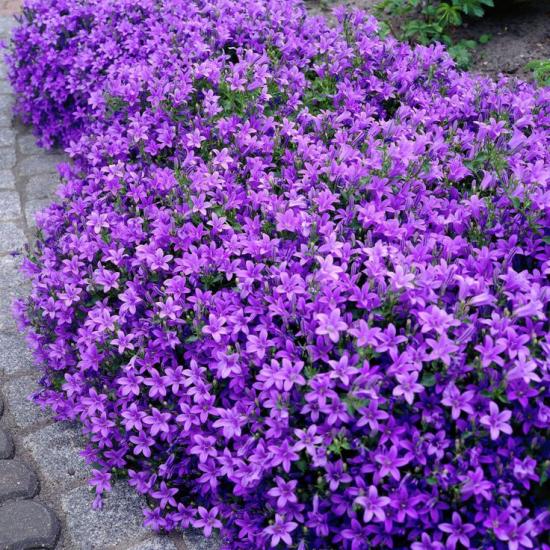
Before planting, the area is dug up to a depth of 30 cm. Weed roots and other plant debris are selected. In heavy soils you need to add sand and peat. It is important to remember that fresh peat cannot be used for planting bells. Make holes in the prepared soil at a distance of no less than 15 - 20 cm. In May, after the soil has completely thawed, dig up the mother bush and divide it into 3 - 4 plants. After planting the cuttings in the holes, they are watered well and the watering area is mulched.
Care
Every spring, a mixture of rotted manure mixed with wood ash is applied under the bellflower bushes. 0.4 kg per square meter is enough. m.If the formation of buds is weak, the plant is fed with a complex mixture of mineral fertilizers at the rate of 15 g of mixture per square meter. m.
You can extend the flowering period by cutting off flower stalks in time after flowering. You only need to leave those from which the seeds will be collected.
They are cut off as soon as the seed pod turns brown, without waiting for it to open and the seeds to spill out. In September, the bushes are pruned at the roots. Bells rarely get sick. As a rule, the threat of fungal infection diseases occurs when grown for many years in one place. In this case, in spring and autumn, the plantings need to be treated with a solution of fundozol. The long and abundant flowering of the portenschlag bell, with its unpretentiousness, is gaining more and more sympathy among flower growers.
Video about the medicinal properties of portenschlag bell:

